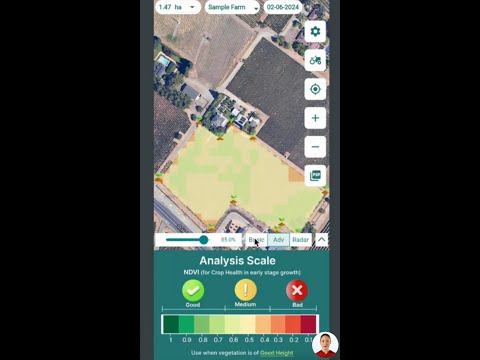Unlocking Iowa’s Financial Landscape: Dividend Yields and Stock Market Analysis for Long-Term Investors
“Institutional ownership significantly influences stock valuation, with hedge funds impacting market performance of finance companies.”
In the heart of America’s heartland, Iowa’s financial landscape is undergoing a transformation that demands the attention of astute long-term investors. As we delve into a comprehensive stock market analysis and financial profitability metrics comparison of two leading finance companies, we aim to provide valuable insights for those looking to capitalize on the evolving banking sector in the Hawkeye State.
Our focus today is on Ames National (NASDAQ:ATLO) and First Horizon (NYSE:FHN), two financial powerhouses that have captured the interest of investors seeking stable returns and growth potential. By examining key performance indicators such as dividend yields, institutional ownership, and investment risk assessments, we’ll paint a clear picture of the opportunities and challenges facing these companies in today’s dynamic market conditions.
The Iowa Financial Sector: A Brief Overview
Before we dive into the specifics of our featured companies, let’s set the stage with a brief overview of Iowa’s financial sector. Known for its agricultural prowess, Iowa also boasts a robust and diverse financial services industry. The state’s banks and credit unions play a crucial role in supporting local businesses, farmers, and consumers, while also competing on a national scale.
In recent years, Iowa’s financial institutions have demonstrated resilience in the face of economic challenges, adapting to changing consumer behaviors and technological advancements. This adaptability has positioned many of the state’s financial companies as attractive options for long-term investors seeking stability and growth potential.
Ames National: A Closer Look
Ames National Corporation, headquartered in Ames, Iowa, operates as a multi-bank holding company providing a wide range of financial services. With a history dating back to 1903, Ames National has deep roots in the communities it serves.
Key Services and Revenue Streams
- Commercial and agricultural real estate loans
- Residential real estate loans
- Consumer loans
- Deposit services
- Wealth management
Ames National’s diverse portfolio of services allows it to tap into various revenue streams, potentially providing a buffer against market fluctuations.
Dividend Yield and Payout Ratio
One of the most attractive features of Ames National for income-focused investors is its dividend policy. The company pays an annual dividend of $0.80 per share, translating to a yield of 4.4%. This relatively high yield could be particularly appealing in the current low-interest-rate environment.
However, it’s crucial to consider the sustainability of these dividends. Ames National’s payout ratio stands at 70.2% of its earnings, which, while not alarmingly high, does leave less room for dividend growth or reinvestment compared to some peers.
Institutional and Insider Ownership
Institutional ownership can be a double-edged sword, often signaling confidence in a company’s prospects but also potentially leading to increased volatility. In the case of Ames National, 26.5% of shares are held by institutional investors, a relatively modest figure that may indicate room for growth in institutional interest.
Notably, insiders hold 3.2% of Ames National shares, which can be seen as a positive sign of management’s confidence in the company’s future.
First Horizon: A National Player with Iowa Presence
First Horizon Corporation, while headquartered in Memphis, Tennessee, has a significant presence in Iowa and serves as an interesting comparison to the more locally-focused Ames National.
Diverse Financial Services Offering
- Commercial banking
- Consumer banking
- Wealth management
- Specialty banking
- Capital markets services
First Horizon’s broader range of services and larger geographical footprint provide it with diverse revenue streams and potential for growth beyond state borders.
Dividend Analysis
First Horizon offers an annual dividend of $0.60 per share, resulting in a yield of 3.2%. While lower than Ames National’s yield, it’s important to note that First Horizon’s payout ratio is a more conservative 44.1%. This lower payout ratio could provide more flexibility for future dividend increases or capital reinvestment.
Institutional Backing and Market Confidence
A striking 80.3% of First Horizon shares are held by institutional investors, significantly higher than Ames National. This high level of institutional ownership often suggests strong confidence in the company’s long-term prospects and may contribute to increased liquidity in the stock.
Insider ownership stands at 0.9%, lower than Ames National but still representing a meaningful stake by company leadership.

Comparative Financial Analysis
To provide a clear picture of how these two companies stack up against each other, let’s examine a side-by-side comparison of key financial metrics:
| Financial Metrics | Ames National (ATLO) | First Horizon (FHN) |
|---|---|---|
| Dividend Yield (%) | 4.4% | 3.2% |
| Dividend Payout Ratio (%) | 70.2% | 44.1% |
| Stock Price Volatility (Beta) | 0.57 | 0.86 |
| Return on Equity (%) | 5.94% | 10.10% |
| Institutional Ownership (%) | 26.5% | 80.3% |
| Price-to-Earnings Ratio | 15.83 | 13.80 |
| Net Margins | 11.05% | 15.38% |
| Return on Assets | 0.48% | 1.07% |
This comparative analysis reveals several key insights:
- Ames National offers a higher dividend yield but with a higher payout ratio, potentially limiting future growth.
- First Horizon demonstrates stronger profitability metrics, including higher return on equity and net margins.
- First Horizon’s stock shows higher volatility (beta), which could translate to greater risk but also potential for higher returns.
- The significant difference in institutional ownership suggests that First Horizon may be viewed more favorably by large investors and could potentially have more liquid trading.
Investment Risk Assessment
When considering long-term investments in the banking sector, it’s crucial to assess the risks associated with each company. Let’s examine some key risk factors for Ames National and First Horizon:
Ames National (ATLO)
- Geographic Concentration: With operations primarily in Iowa, Ames National is more exposed to local economic conditions and regulatory changes.
- Interest Rate Sensitivity: As a smaller bank, Ames National may be more sensitive to interest rate fluctuations, which can impact net interest margins.
- Competition: Increasing competition from larger national banks and fintech companies could pressure Ames National’s market share.
First Horizon (FHN)
- Integration Risks: As a larger entity with a history of acquisitions, First Horizon faces risks associated with integrating new businesses and realizing synergies.
- Regulatory Scrutiny: Larger banks often face more intense regulatory oversight, which can impact operations and profitability.
- Macroeconomic Sensitivity: With a broader geographic footprint, First Horizon may be more susceptible to national economic trends and global financial conditions.
“Dividend payout ratios and return on equity are crucial metrics for assessing financial health in banking sector investments.”
Long-Term Investment Strategies in the Banking Sector
For investors looking to capitalize on opportunities in Iowa’s financial landscape, consider the following strategies:
- Diversification: While both Ames National and First Horizon offer compelling investment cases, diversifying across multiple financial institutions can help mitigate risk.
- Income Focus: If regular income is a priority, Ames National’s higher dividend yield may be attractive, but be mindful of the sustainability of these payouts.
- Growth Potential: First Horizon’s stronger profitability metrics and broader market presence may offer greater potential for capital appreciation over time.
- Monitoring Local Economic Trends: Keep a close eye on Iowa’s economic indicators, particularly in agriculture and real estate, as these can significantly impact local banks like Ames National.
- Technological Adoption: Assess each bank’s investment in and adoption of financial technology, as this will be crucial for competing in the evolving banking landscape.
The Role of Institutional Investors and Hedge Funds
The significant difference in institutional ownership between Ames National and First Horizon warrants further discussion. Institutional investors, including hedge funds, can have a substantial impact on stock valuation and market performance.
Advantages of High Institutional Ownership
- Increased Liquidity: Stocks with high institutional ownership often enjoy greater trading volume, making it easier for investors to buy and sell shares.
- Perceived Stability: High institutional ownership can signal confidence in a company’s long-term prospects, potentially attracting more investors.
- Corporate Governance: Institutional investors often push for better corporate governance practices, which can benefit all shareholders.
Potential Drawbacks
- Volatility: Large institutional trades can lead to significant price swings, especially for smaller companies.
- Short-Term Focus: Some institutional investors, particularly hedge funds, may prioritize short-term gains over long-term value creation.
For long-term investors in Iowa’s financial sector, understanding the role of institutional ownership can inform investment decisions and help anticipate potential market movements.
Impact of Current Market Conditions on Dividend Yields and Income Potential
The current economic environment, characterized by low interest rates and ongoing recovery from the COVID-19 pandemic, has significant implications for dividend-focused investors in the banking sector.
Low Interest Rate Environment
Persistent low interest rates pose challenges for banks’ net interest margins, potentially impacting their ability to maintain or grow dividends. However, this environment also makes dividend-paying stocks more attractive to income-seeking investors, potentially supporting stock prices.
Economic Recovery and Loan Demand
As the economy recovers, increased loan demand could boost banks’ profitability, potentially leading to dividend growth. Both Ames National and First Horizon stand to benefit from this trend, albeit in different ways due to their varying geographical focuses.
Regulatory Considerations
Banking regulations, particularly those related to capital requirements, can impact dividend policies. Investors should stay informed about regulatory changes that could affect banks’ ability to return capital to shareholders.

Revenue Streams: A Closer Look
Understanding the revenue composition of Ames National and First Horizon provides valuable insights into their business models and potential for growth. Let’s examine their primary revenue streams:
Ames National
- Commercial Loans: A significant portion of Ames National’s revenue comes from commercial and agricultural real estate loans, reflecting its strong ties to Iowa’s business community.
- Consumer Banking: Personal loans, mortgages, and deposit services contribute to a stable revenue base.
- Wealth Management: While a smaller segment, wealth management services offer potential for growth and diversification of income.
First Horizon
- Commercial Banking: As a larger institution, First Horizon has a substantial commercial banking operation, serving businesses across multiple states.
- Consumer Banking: A broad range of consumer products, including mortgages, personal loans, and credit cards, form a significant revenue stream.
- Capital Markets: First Horizon’s involvement in capital markets activities provides an additional revenue source not present in smaller banks like Ames National.
- Specialty Banking: Niche services such as franchise finance and healthcare banking contribute to a diversified revenue mix.
This diversity in revenue streams can provide resilience against economic fluctuations and offer multiple avenues for growth.
Technological Innovation in Banking: A Key Differentiator
In today’s rapidly evolving financial landscape, a bank’s ability to innovate and adopt new technologies can be a significant factor in its long-term success. Both Ames National and First Horizon have recognized this imperative, but their approaches and capabilities differ.
Ames National’s Tech Initiatives
- Digital Banking Platform: Ames National has invested in enhancing its online and mobile banking services to meet the needs of tech-savvy customers.
- Community Focus: The bank’s technology strategy often emphasizes solutions tailored to the specific needs of its local customer base.
First Horizon’s Technology Edge
- Fintech Partnerships: As a larger institution, First Horizon has the resources to partner with fintech companies, potentially accelerating its digital transformation.
- Data Analytics: Advanced data analytics capabilities allow First Horizon to offer more personalized services and make data-driven decisions.
- Blockchain Exploration: First Horizon has shown interest in blockchain technology, which could revolutionize various banking processes in the future.
For long-term investors, assessing a bank’s technological capabilities and innovation strategy is crucial. Those institutions that successfully leverage technology to improve efficiency, enhance customer experience, and create new revenue streams are likely to outperform in the long run.
Environmental, Social, and Governance (ESG) Considerations
As ESG factors become increasingly important to investors, it’s worth examining how Ames National and First Horizon fare in this area:
Ames National
- Community Involvement: Strong focus on supporting local communities through charitable initiatives and volunteering.
- Environmental Impact: As a smaller bank, Ames National’s direct environmental impact is limited, but it has opportunities to influence sustainability through its lending practices.
- Governance: Local focus may allow for more direct shareholder engagement and transparency.
First Horizon
- Diversity and Inclusion: Larger banks like First Horizon often have more comprehensive diversity and inclusion programs.
- Sustainability Initiatives: First Horizon has implemented various sustainability measures across its operations and has the scale to make a significant impact.
- Corporate Governance: As a larger, publicly traded company, First Horizon is subject to more stringent governance requirements and scrutiny.
ESG performance can impact a company’s long-term sustainability and attractiveness to certain investors. As such, it’s an important factor to consider in any comprehensive investment analysis.
The Future of Banking in Iowa: Opportunities and Challenges
As we look to the future of banking in Iowa, several trends and factors are likely to shape the industry:
Opportunities
- Agricultural Technology: Iowa’s strong agricultural sector presents opportunities for banks to finance innovative agtech initiatives.
- Renewable Energy: The state’s growing renewable energy sector could provide new lending and investment opportunities for banks.
- Digital Transformation: Continued investment in digital banking technologies can help Iowa banks compete with larger national institutions.
Challenges
- Rural Population Decline: Some parts of Iowa are experiencing rural population decline, which could impact the customer base of local banks.
- Increased Competition: Fintech companies and national banks are increasingly competing for market share in Iowa.
- Regulatory Changes: Evolving banking regulations could present compliance challenges, particularly for smaller institutions.
Both Ames National and First Horizon will need to navigate these opportunities and challenges effectively to thrive in the evolving Iowa banking landscape.
Conclusion: Making Informed Investment Decisions
As we’ve explored in this comprehensive analysis, both Ames National and First Horizon offer unique value propositions for long-term investors interested in Iowa’s financial landscape. Ames National provides a higher dividend yield and deep local market knowledge, while First Horizon offers broader diversification and potentially greater growth prospects.
Ultimately, the choice between these two stocks – or indeed, whether to invest in either – depends on individual investment goals, risk tolerance, and market outlook. Here are some key takeaways to consider:
- Dividend-focused investors may find Ames National’s higher yield attractive, but should be mindful of the higher payout ratio.
- Those seeking growth potential might lean towards First Horizon, given its stronger profitability metrics and broader market presence.
- Risk-averse investors should consider Ames National’s lower stock price volatility, while those comfortable with more risk might prefer First Horizon’s potential for higher returns.
- The significant difference in institutional ownership between the two companies is a crucial factor to consider, as it can impact stock liquidity and price stability.
As always, it’s essential to conduct thorough due diligence, consider your personal financial situation, and consult with a financial advisor before making any investment decisions. The banking sector, particularly in a state like Iowa with its unique economic characteristics, offers both opportunities and challenges for long-term investors. By staying informed about market trends, regulatory changes, and company-specific developments, investors can position themselves to capitalize on the evolving financial landscape in the Hawkeye State.
FAQ Section
Q: What are the main differences between Ames National and First Horizon?
A: Ames National is a smaller, Iowa-focused bank with a higher dividend yield, while First Horizon is a larger institution with broader geographic reach and potentially higher growth prospects.
Q: Which stock is better for income-focused investors?
A: Ames National offers a higher dividend yield (4.4% vs. 3.2%), making it potentially more attractive for income-focused investors. However, its higher payout ratio suggests less room for dividend growth compared to First Horizon.
Q: How does institutional ownership differ between the two companies?
A: First Horizon has significantly higher institutional ownership (80.3%) compared to Ames National (26.5%), which can impact stock liquidity and market performance.
Q: What are the main risks associated with investing in these banks?
A: Key risks include interest rate fluctuations, economic downturns, regulatory changes, and competition from fintech companies. Ames National faces additional risks due to its geographic concentration in Iowa.
Q: How do these banks compare in terms of profitability?
A: First Horizon demonstrates stronger profitability metrics, with higher return on equity (10.10% vs. 5.94%) and net margins (15.38% vs. 11.05%) compared to Ames National.
Earn With Farmonaut: Affiliate Program
Earn 20% recurring commission with Farmonaut’s affiliate program by sharing your promo code and helping farmers save 10%. Onboard 10 Elite farmers monthly to earn a minimum of $148,000 annually—start now and grow your income!
Additional Resources:






